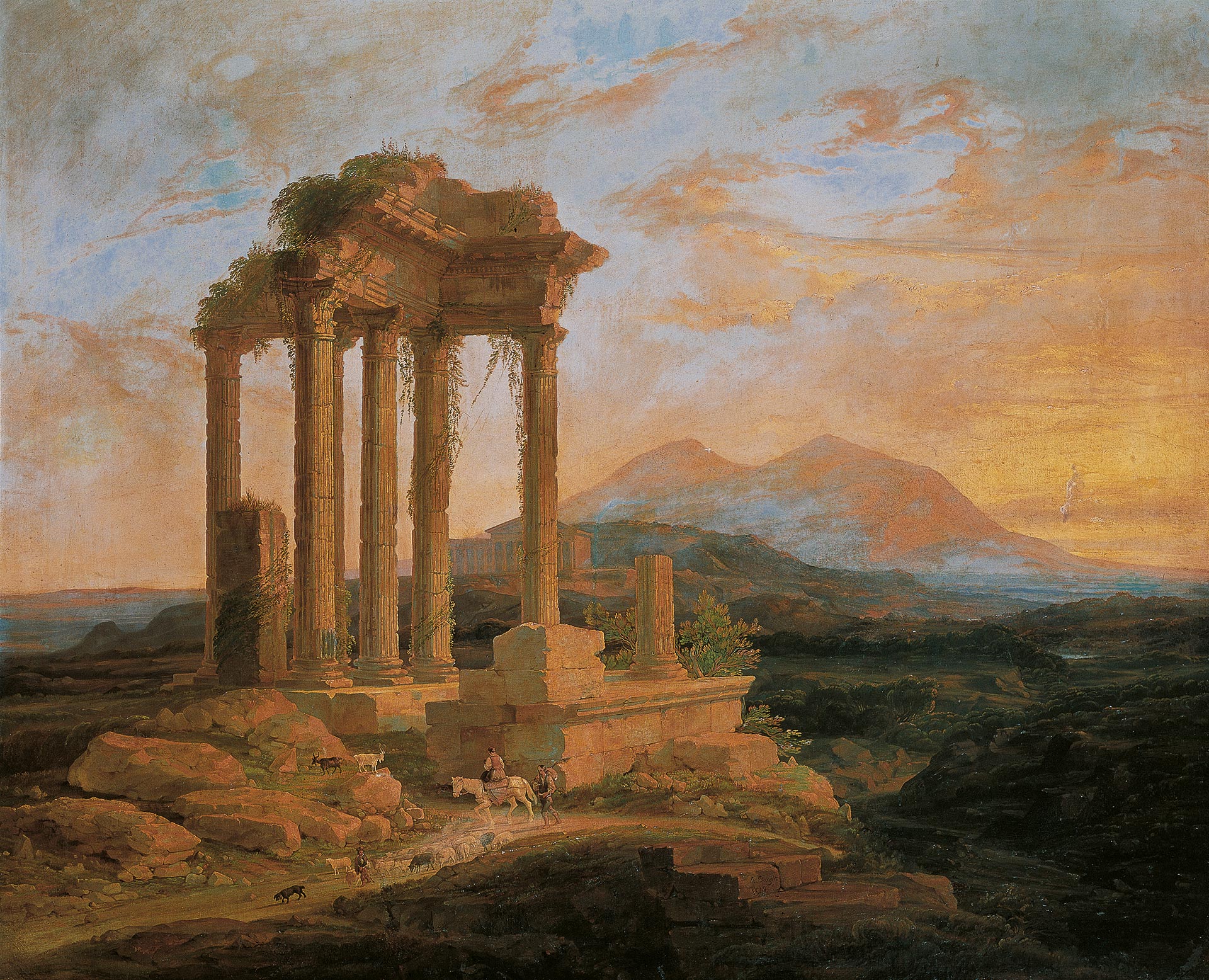
Lluís Rigalt (Barcelona, 1814-1894)
Landscape with Ruins
1848
WORK INFORMATION
Oil on canvas, 98 x 119 cm
OTHER INFORMATION
Signed and dated at the bottom right, on the steps: "L. Rigalt / 1848"
Lluís Rigalt and the lithographer Francesc Xavier Parcerisa are considered the leading Catalan Romantic landscape artists. However, Rigalt's Romanticism was serene and stately rather than emphatic and ecstatic. Attuned to the nationalist fervour sparked in the Western world by the Romantic movement, he rediscovered the landscape and monuments of his homeland while other intellectuals were rediscovering its history and legends. This rediscovery was made day after day, year after year, in his tireless excursions throughout Catalonia from 1841 to 1884, if not longer, always armed with a sketchbook. He occasionally wandered across the border into France: in 1850 he went as far as Provence, and in 1857 he passed through Lyon and stopped in Paris, where Antoni Ollé Pinell detected the slight influence of the Barbizon School in his style which, despite this, did not vary substantially in the course of his long artistic career.
Landscape art became increasingly important in Catalonia in the first quarter of the 19th century, as evidenced by the fact that a chair in this field was created in 1824 at the Fine Art School run by the Board of Commerce in Barcelona. The first to hold the chair was the eclectic neoclassicist Pau Rigalt, who embraced Rococo tradition to an extent as well as the Italian landscape style introduced by Salvator Rosa. His son, Lluís Rigalt Farriols, was appointed to this chair temporarily in 1840 and confirmed in 1845 following his father's death.
Between 1848 and 1858, he participated annually in the painting exhibitions organised by the Association of Friends of the Fine Arts in the galleries of the Monastery of Sant Joan de Jerusalem. He also worked as a decorator at the new royal palace in Barcelona (1845) and the cathedral (for the funerals of General Castaños in 1852 and Martínez de la Rosa in 1862), and he may even have undertaken the odd architectural project. Rigalt was a fellow of the Academy of Fine Arts from the time of its founding, in 1850, and of the Academy of Sant Jordi in Barcelona; and between 1877 and 1887 he served as the director of Barcelona's Official School of Fine Arts—the Llotja—where he himself had studied.
Landscape with Ruins is one of the most important known works from Rigalt's early period. Here we can tell that the artist was still strongly attached to the tradition of classicist Italianate landscapes: the school of Graeco-Roman "ruins painters" in which Giovanni Paolo Pannini (1691–1764) set an example followed by many—including Michele Marieschi, Piranesi and Hubert Robert, well into the 18th century—but which can actually be traced back to Claude Lorraine, and perhaps even to Renaissance masters like Bellini and Mantegna. [Francesc Fontbona]

